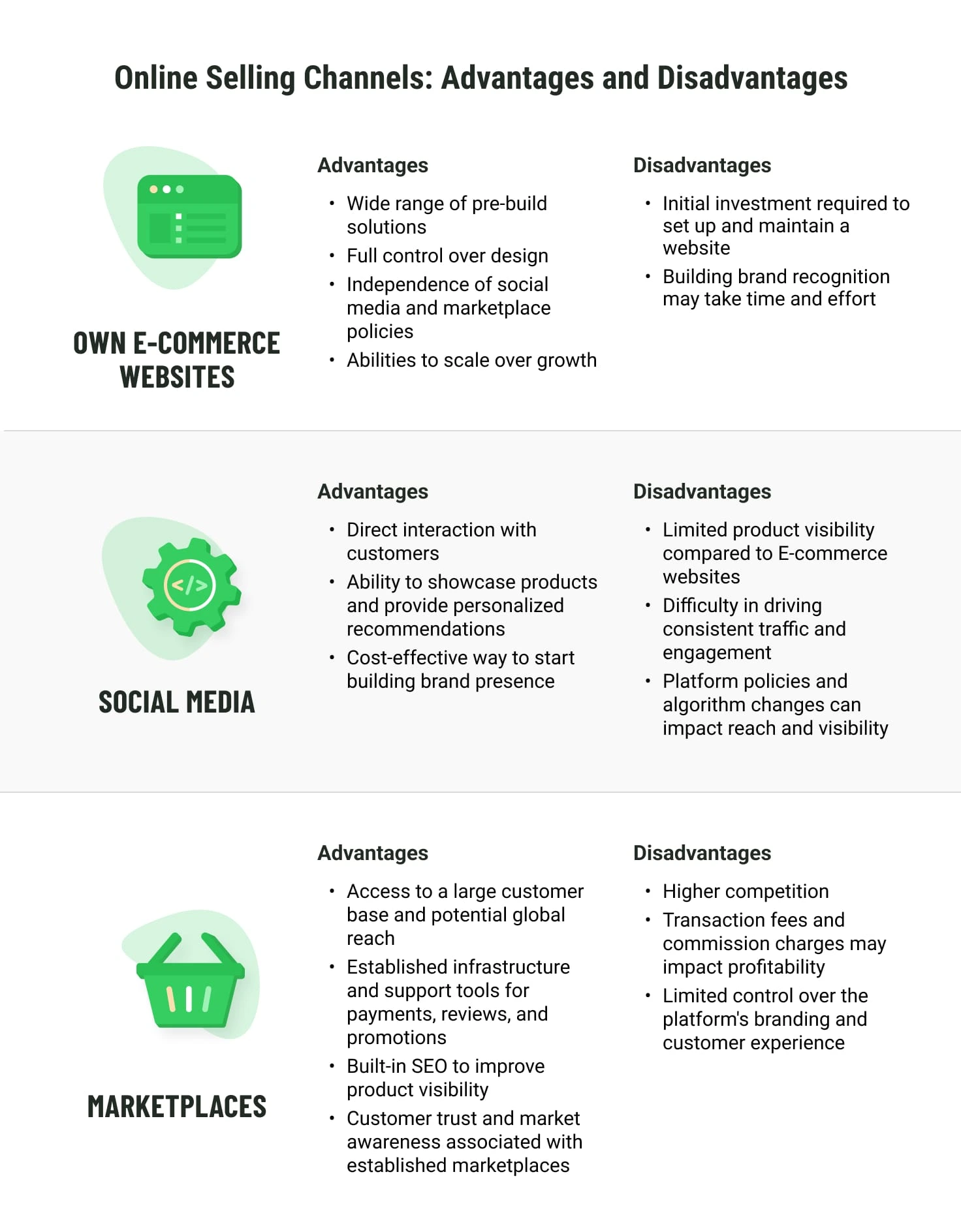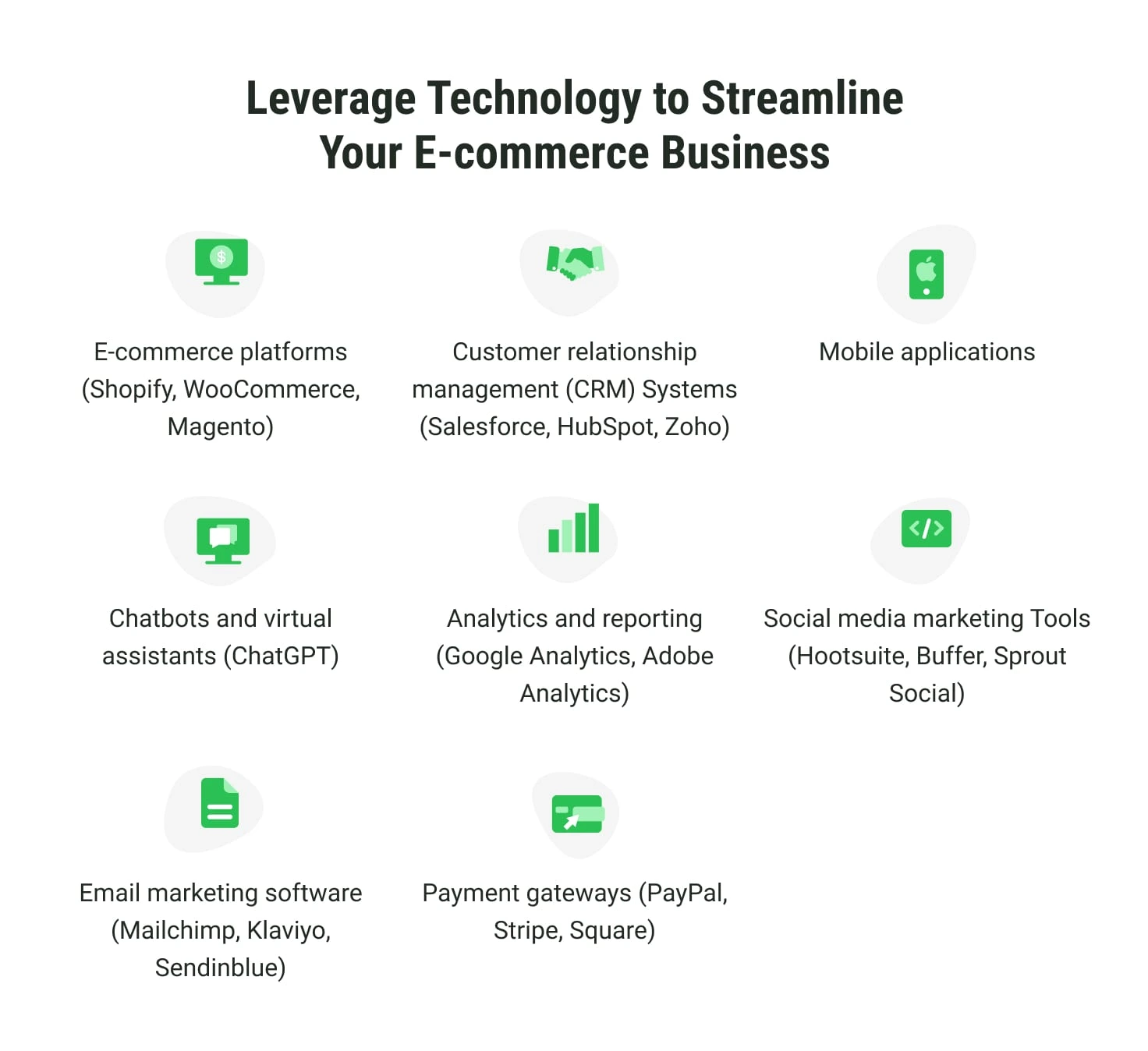How to Start an E-Commerce Business?
Table of contents
E-commerce, also known as electronic commerce, refers to the online trading of goods and services. While some companies exclusively sell products online, others adopt E-commerce as part of a comprehensive strategy that encompasses physical stores and various distribution channels. Regardless of the approach, E-commerce empowers startups, small businesses, and large companies to sell products on a large scale and reach customers across the globe.
Looking to venture into the world of E-commerce but unsure of where to start? Read our comprehensive guide, designed to provide you with expert insights and step-by-step instructions on how to get into the E-commerce business. Explore the essential core steps and gain the knowledge you need to thrive in the competitive online marketplace.
Reasons to Start an E-Commerce Business
E-commerce is a thriving and rapidly growing industry, and the good news is that it's not too late to join and seize the opportunities. Here are some compelling statistics that demonstrate the industry's potential for aspiring entrepreneurs.
- According to Morgan Stanley, E-commerce makes up 22% of sales.
- Online is the preferred shopping method across the younger generations.
- By 2026, 24% of retail purchases are expected to take place online.
- Global E-commerce revenue is projected to reach $8.1 trillion by 2026.
However, these E-commerce sector statistics across the overall economy may not provide much insight to the average person. Let's look at the more “tangible” benefits of starting an E-commerce business.
- Global reach. E-commerce breaks geographical barriers, expanding your customer base worldwide beyond traditional brick-and-mortar limitations.
- 24/7 availability. In contrast to brick-and-mortar shops that adhere to fixed operating hours, an E-commerce enterprise operates 24/7, granting customers the convenience to shop at their leisure. This adaptability fosters heightened sales and customer contentment, ensuring a more satisfying shopping experience.
- Lower costs. Launching an E-commerce business generally demands less initial investment when compared to setting up a physical store. By opting for E-commerce, entrepreneurs can reduce costs related to rent, utilities, and staffing, making it an appealing choice, particularly for those with limited financial resources.
- Scalability. E-commerce presents vast opportunities for scalability, enabling swift business expansion in response to growing demand. By implementing a robust infrastructure and streamlined systems, you can effectively manage high order volumes and efficiently accommodate the rapid growth of your business.
- Targeted marketing. Online platforms provide powerful tools for targeted marketing, allowing you to reach your ideal customers with personalized messaging and tailored promotions. This precise targeting can result in higher conversion rates and improved ROI (return on investment).
- Data-driven insights. E-commerce platforms generate valuable data and analytics, enabling informed business decisions, optimized marketing strategies, and enhanced customer experiences.
- Niche market opportunities. E-commerce enables access to niche markets inaccessible to physical stores. By identifying specialized product categories or unique customer segments, you can gain a competitive edge and cater to specific customer needs.
- Adaptability to trends. E-commerce swiftly adapts to market trends, facilitating product innovation, idea testing, and flexible business strategy changes, unlike traditional retail models.

How to Get Into E-Commerce: a Step-By-Step Guide
Launching an E-commerce business can be an exciting and rewarding venture. However, it's crucial to approach it with careful planning and consideration. Let’s explore the key elements and strategies involved in launching an online store.
Step 1. Find the idea
To discover a viable business idea for E-commerce, it is essential to focus on understanding market needs and identifying opportunities. Here's an approach to help you find the idea:
1. Analyze common industry challenges and problems faced by potential customers.
2. Determine the underlying causes of these problems and their significance.
3. Identify product solutions that can effectively resolve these issues.
4. Capitalize on observed market trends to align with evolving consumer preferences.
5. Enhance existing products based on customer reviews, focusing on recurring complaints.
6. Engage with potential customers to understand their frustrations and evaluate their willingness to pay for a solution.
7. Conduct competitor research to gain insights into product features, pricing, and customer reviews.
Step 2. Source products
After determining your product offerings and target audience, the next step is to identify reliable sources for your products. Choosing the right products and sources is crucial for the success of your online business. Here are several options for sourcing E-commerce products:
Resell existing products
Utilize online directories and listings to find suppliers for products you can resell. Establishing relationships with suppliers can result in cost-effective procurement and a consistent supply chain.
Create or build products
If you prefer control over quality and design, consider building your own products. This method may be more suitable for smaller-scale operations, such as crafting handmade products or exploring artisanal selling options.
Dropshipping or print-on-demand (POD)
Adopt a dropshipping model where you fulfill orders by purchasing products from third-party suppliers who directly ship to customers. Alternatively, consider print-on-demand, which allows you to produce custom designs or unique products only after customers place orders.
Work with a manufacturer
Partnering with a manufacturer grants you the ability to build your brand and customize products. Although it requires investment in time and resources, you can request prototypes and assess manufacturers based on their speed, quality, and communication.
It is advisable to have backup suppliers to mitigate potential supply chain issues. Exploring options with suppliers in different countries or regions can help prevent stock shortages in case of delays.
Step 3. Decide on an online selling channel
There are a variety of selling channels you can use to distribute your product, for example, a popular E-commerce website, social media sites like Facebook, Instagram, or Pinterest, or established marketplaces.

Step 4. Set up an online store
Regardless of the approach you choose, establishing a strong online presence, optimizing product listings, and delivering an exceptional customer experience are key factors in the success of your E-commerce store. Here are some fundamental steps to follow when setting up your online store.
- Customize your online store to reflect your brand and provide a user-friendly experience. Design an appealing layout, ensure easy navigation, and optimize your store for mobile devices.
- List your products with accurate and detailed information. Craft compelling product descriptions that highlight features, benefits, and unique selling points. Use high-quality images or videos to showcase your products effectively.
- Set competitive pricing based on market research, considering factors such as costs, profit margins, and customer expectations. Implement efficient inventory management systems to ensure product availability and prevent stockouts.
- Integrate a secure and reliable payment processing system to facilitate smooth and secure transactions. Offer various payment options to accommodate customer preferences.
- Establish a streamlined shipping and fulfillment process. Determine the most cost-effective and reliable shipping methods, negotiate shipping rates, and ensure timely order fulfillment.
Step 5. Promote your business
To start and grow your E-commerce business, effective marketing and promotional campaigns are essential. There are several options available for promoting your products.
Social media marketing
Identify if your target audience is active on social media platforms. Incorporate one or two social media channels into your promotions to boost brand and product awareness. Develop a social media strategy that outlines how you’ll engage with users, collaborate with influencers, and share content. Start with a well-defined plan to optimize your efforts.
Advertising and promoting your online storefront
Utilize advertising campaigns specific to your selling channel to increase product visibility. Sponsored products, sponsored brands (available to brand owners), lightning deals, and coupons are effective ways to enhance exposure and generate sales.

Technologies and Tools to Help E-Commerce Businesses
In today's digital era, technology plays a pivotal role in boosting E-commerce businesses. Embracing the following tools can empower your business to stay competitive:
- E-commerce platforms (Shopify, WooCommerce, Magento)
- Customer relationship management (CRM) Systems (Salesforce, HubSpot, Zoho)
- Mobile applications
- Chatbots and virtual assistants (ChatGPT)
- Analytics and reporting (Google Analytics, Adobe Analytics)
- Social media marketing Tools (Hootsuite, Buffer, Sprout Social)
- Email marketing software (Mailchimp, Klaviyo, Sendinblue)
- Payment gateways (PayPal, Stripe, Square).

Summary
The E-commerce industry is experiencing rapid growth, making it an ideal landscape for business development. When embarking on your E-commerce journey, it is crucial to partner with a reliable technology provider. Emerline, with its extensive experience in the E-commerce field, can be your trusted partner, guiding you through the process regardless of your chosen development path.
Book a free consultation with our experts at Emerline and leverage our expertise to successfully establish and grow your E-commerce business.
Published on Jul 27, 2023





